TRPV5
-
Official Full Name
transient receptor potential cation channel, subfamily V, member 5 -
Overview
This gene is a member of the transient receptor family and the TrpV subfamily. The calcium-selective channel encoded by this gene has 6 transmembrane-spanning domains, multiple potential phosphorylation sites, an N-linked glycosylation site, and 5 ANK repeats. This protein forms homotetramers or heterotetramers and is activated by a low internal calcium level. [provided by RefSeq, Jul 2008] -
Synonyms
TRPV5;transient receptor potential cation channel, subfamily V, member 5;CAT2;ECAC1;OTRPC3;transient receptor potential cation channel subfamily V member 5;ECaC;calcium transporter 2;osm-9-like TRP channel 3;calcium transport protein 2;epithelial calcium channel 1
Recombinant Proteins
- Human
- Mouse
- Rat
- Oryctolagus cuniculus
- E.coli
- Mammalian Cells
- HEK293
- His
- Flag
- Avi
- Fc
Background
What is TRPV5 Protein?
TRPV5 is a protein that creates a channel in the kidneys specifically designed for calcium reabsorption. It's in the TRP channel family, important for many body functions. TRPV5 keeps calcium levels stable by allowing efficient reabsorption into the bloodstream, preventing loss in urine. This function is essential for healthy bones and numerous cell activities that need calcium. Scientists are interested in TRPV5 because changes in its function can impact calcium levels and potentially contribute to conditions like osteoporosis or kidney stones.What is the Function of TRPV5 Protein?
TRPV5 works as a calcium channel in the kidneys, helping to reabsorb calcium. It makes sure calcium goes back into the blood instead of leaving the body in urine, which is vital for keeping bones strong. Besides bones, TRPV5 is important for muscle movements, nerve messages, and hormone releases, all of which rely on calcium. Its efficient operation ensures that our body's calcium levels remain stable, supporting overall health. Researchers are keen on understanding TRPV5 better because any dysfunction in this protein could lead to health issues like osteoporosis or kidney stones due to imbalanced calcium levels.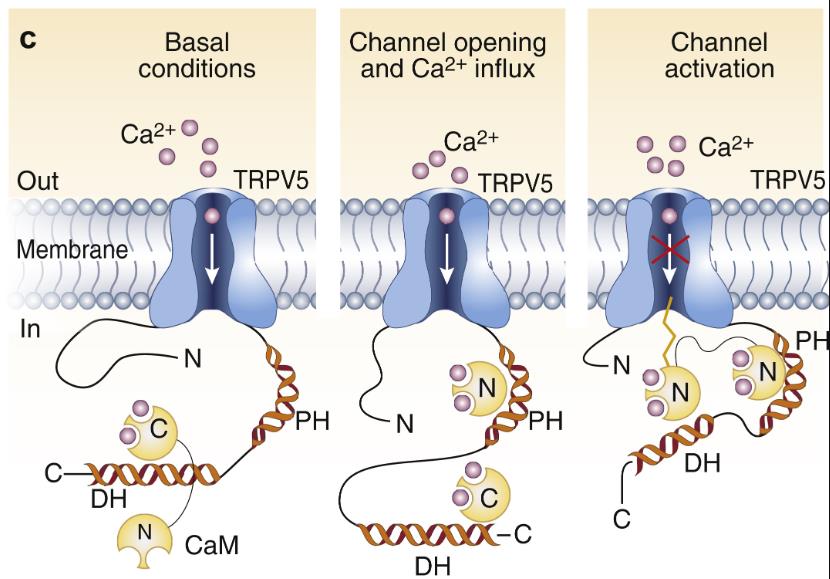
Fig1. Schematic model for CaM-mediated TRPV5 channel inactivation. (Jenny van der Wijst, 2019)
TRPV5 Related Signaling Pathway
The TRPV5 protein is involved in signaling pathways crucial for calcium balance in the body. When calcium levels need adjusting, TRPV5 channels open in the kidney cells to allow more calcium reabsorption into the bloodstream. This action is part of a larger network of signals that ensure our body maintains proper calcium levels. This signaling pathway affects not just bone health but also other important functions like how our muscles contract and how signals travel between nerves. Moreover, hormones that regulate calcium, such as parathyroid hormone, can influence the activity of TRPV5, showing how interconnected these pathways are. Understanding the TRPV5-related pathway is key for researchers, especially in tackling issues like calcium deficiencies or conditions like osteoporosis, where calcium balance is disrupted.TRPV5 Related Diseases
When TRPV5 doesn't work well, it can lead to health problems because of its role in calcium regulation. One issue that might arise is kidney stones, which happen if calcium isn't properly reabsorbed and starts to build up in the kidneys. Another concern is osteoporosis; when bones don't get enough calcium, they can become fragile, and TRPV5 might be part of the cause. Plus, calcium imbalances can affect heart and muscle functions, as both need calcium to work right. By looking into TRPV5, researchers aim to find better ways to manage and prevent these issues related to calcium imbalance.Bioapplications of TRPV5
TRPV5, part of the TRP channel family, is crucial in managing calcium levels, especially in the kidneys and bones. In the kidneys, it reabsorbs calcium to prevent excess loss through urine, helping maintain necessary calcium levels in the blood for various body functions. In bones, it supports mineralization, ensuring strength and reducing fracture risk. Understanding TRPV5's role opens doors to potential treatments for conditions like osteoporosis and kidney stones by addressing calcium imbalances, highlighting its significance in health research.Case Study
Case Study 1: Mahtani T. et al. Front Immunol. 2024
B-cell activation causes calcium release through CRAC channels. Blocking SOCE in mice doesn't impact immunity, suggesting other channels are involved. Researchers found TRPV5 in B cells, and made TRPV5 knockout mice using CRISPR-Cas9. TRPV5 activates in BCR clusters and relies on PI3K-RhoA. While knockout mice have normal B-cell development, their B cells struggle with spreading and contracting in response to antigens, affecting BCR signaling. TRPV5 is key for early T-dependent immune responses after immunization.-
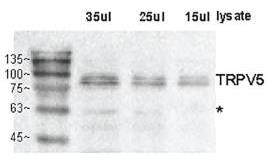 Fig1. Primary murine B cells were lysed, and varying volumes of lysate were subjected to SDS-PAGE followed by immunoblotting.
Fig1. Primary murine B cells were lysed, and varying volumes of lysate were subjected to SDS-PAGE followed by immunoblotting. -
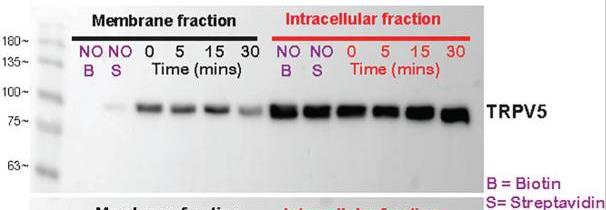 Fig2. Membrane-localized TRPV5 polarizes to BCR clusters in a signaling-dependent manner.
Fig2. Membrane-localized TRPV5 polarizes to BCR clusters in a signaling-dependent manner.
Case Study 2: de Groot T. et al. J Biol Chem. 2011
TRPV5 is a kidney calcium channel vital for calcium uptake. It's part of the TRP channel family, made of four subunits. The C and N termini regulate its activity, but the N terminus is less understood. Researchers tested TRPV5 with parts of the N terminus removed. Deleting the first 32 residues didn’t impact function, but cutting up to residues 34 and 75 halted activity. These mutant channels stayed in the endoplasmic reticulum and didn’t reach the Golgi, affecting glycosylation. Some reached the plasma membrane but weren’t internalized, resulting in fewer channels compared to the wild type. The N-terminal deletions didn’t affect channel assembly.-
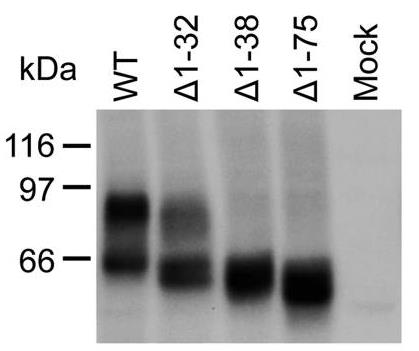 Fig3. Protein expression of TRPV5-WT and mutants.
Fig3. Protein expression of TRPV5-WT and mutants. -
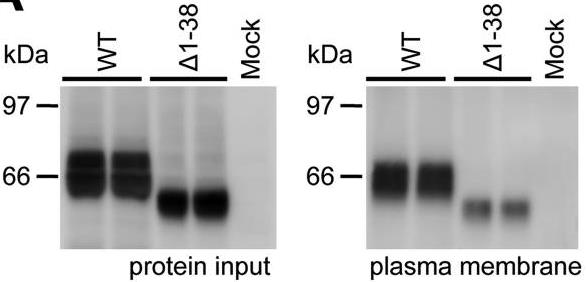 Fig4. The plasma membrane expression of TRPV5-WT and TRPV5-Δ1–38 in transiently transfected HEK293 cells.
Fig4. The plasma membrane expression of TRPV5-WT and TRPV5-Δ1–38 in transiently transfected HEK293 cells.
Quality Guarantee
High Purity
-
.jpg) Fig1. SDS-PAGE (TRPV5-630H)
Fig1. SDS-PAGE (TRPV5-630H) -
.jpg) Fig2. SDS-PAGE (TRPV5-6012H)
Fig2. SDS-PAGE (TRPV5-6012H)
Involved Pathway
TRPV5 involved in several pathways and played different roles in them. We selected most pathways TRPV5 participated on our site, such as Endocrine and other factor-regulated calcium reabsorption, which may be useful for your reference. Also, other proteins which involved in the same pathway with TRPV5 were listed below. Creative BioMart supplied nearly all the proteins listed, you can search them on our site.
| Pathway Name | Pathway Related Protein |
|---|---|
| Endocrine and other factor-regulated calcium reabsorption | GNAS,DNM2,PRKACB,ATP1B1,KL,PRKCA,PRKCB,PRKACA,ATP1A4,ATP2B1 |
-
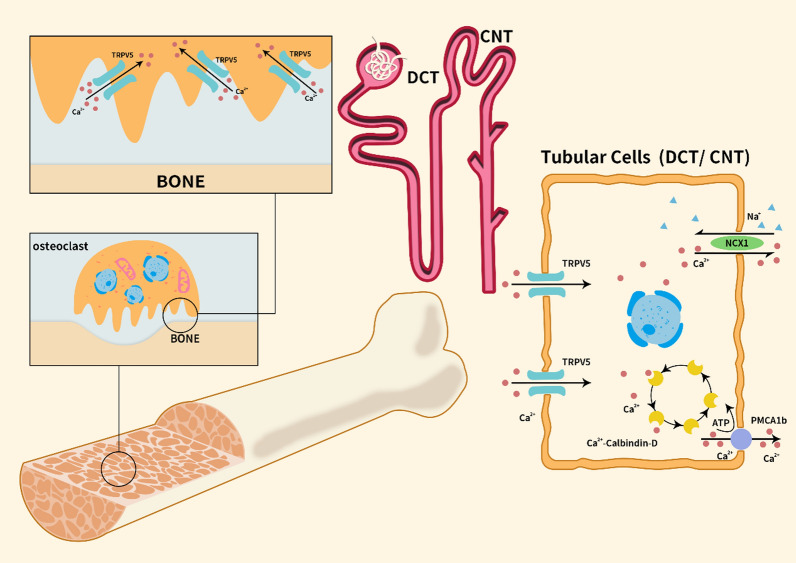 Fig1. TRPV5 channels are distributed in osteoclasts and the apical membrane of tubular cells in the DCT and CNT. (Zhi-Heng Luo, 2023)
Fig1. TRPV5 channels are distributed in osteoclasts and the apical membrane of tubular cells in the DCT and CNT. (Zhi-Heng Luo, 2023) -
 Fig2. Renal calcium (Ca2+) handling. (Jenny van der Wijst, 2019)
Fig2. Renal calcium (Ca2+) handling. (Jenny van der Wijst, 2019)
Protein Function
TRPV5 has several biochemical functions, for example, calcium channel activity,calmodulin binding,ion channel activity. Some of the functions are cooperated with other proteins, some of the functions could acted by TRPV5 itself. We selected most functions TRPV5 had, and list some proteins which have the same functions with TRPV5. You can find most of the proteins on our site.
| Function | Related Protein |
|---|---|
| protein binding | ETV6,GOLM1,CRY2,CASP6,RTN4RL1,RARRES2,METTL15,RRAD,FBF1,LIG4 |
| ion channel activity | TRPC7B,CHRNA4B,TRPM1A,P2RX3A,SCN12AA,KCNS3B,TRPA1A,CLCNKB,CLCN6,TRPC2B |
| calmodulin binding | REM1,CAMKV,ATP2B1,EPB41B,PLCB1,CAMK1G,TRPV4,SPHK1,ARPP21,CNGA2 |
| calcium channel activity | CACNA2D3,CHRNA10,RYR1B,ITPR1,TRPM8,TRPM6,TPCN1,TRPV1,PDE2A,TRPV4 |
Interacting Protein
TRPV5 has direct interactions with proteins and molecules. Those interactions were detected by several methods such as yeast two hybrid, co-IP, pull-down and so on. We selected proteins and molecules interacted with TRPV5 here. Most of them are supplied by our site. Hope this information will be useful for your research of TRPV5.
Wnk4;Slc9a3r2
Resources
Related Services
Related Products
References


